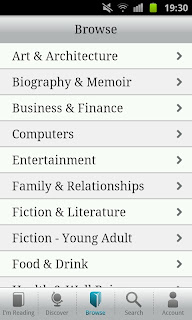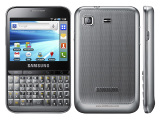You’ve probably seen a few of this type of review floating about, and may be a bit concerned about bias, so I’m going to attempt to do a simple review, detailing the specs and features of each phone.
| SAMSUNG GALAXY S II | APPLE IPHONE 4S |
|
SIZE - 125.3 x 66.1 x 8.5 mm WEIGHT - 116 g DISPLAY - Super AMOLED Plus capacitive touch screen, 16M colours 480 x 800 pixels, 4.3 inches (~217 ppi pixel density) - Gorilla Glass display
- TouchWiz UI v4.0
- Multi-touch input method
- Accelerometer sensor for UI auto-rotate
- Touch-sensitive controls
- Proximity sensor for auto turn-off
- Gyroscope sensor MEMORY - 16GB/32GB storage, 1 GB RAM microSD, up to 32GB, 8 GB included CAMERA - 8 MP, 3264x2448 pixels, autofocus, LED flash Geo-tagging, touch focus, face and smile detection, image stabilization 1080p video recording, 2mp front camera OS - Android OS, v2.3 (Gingerbread) Dual-core 1.2GHz ARM Cortex-A9 processor, Mali-400MP GPU, Exynos chipset FEATURES - Active noise cancellation with dedicated mic
- TV-out (via MHL A/V link)
- SNS integration
- Digital compass - MP4/DivX/XviD/WMV/H.264/H.263 player
- MP3/WAV/eAAC+/AC3/FLAC player
- Organizer - Image/video editor
- Document editor (Word, Excel, PowerPoint, PDF)
- Google Search, Maps, Gmail,
YouTube, Calendar, Google Talk, Picasa integration
- Adobe Flash 10.1 support
- Voice memo/dial/commands
- Predictive text input (Swype)
BATTERY - Standard battery, Li-Ion 1650 mAh TALK - Up to 18 h 20 min (2G) / Up to 8 h 40 min (3G) STANDBY - Up to 710 h (2G) / Up to 610 h (3G)
|
SIZE - 115.2 x 58.6 x 9.3 mm WEIGHT - 140 g DISPLAY - LED-backlit IPS TFT, capacitive touch screen, 16M colours 640 x 960 pixels, 3.5 inches (~330 ppi pixel density) - Scratch-resistant oleophobic surface
- Multi-touch input method
- Accelerometer sensor for auto-rotate
- Three-axis gyro sensor
- Proximity sensor for auto turn-off
MEMORY - 16/32/64 GB storage, 512 MB RAM
CAMERA - 8 MP, 3264x2448 pixels, autofocus, LED flash Touch focus, geo-tagging, face detection 1080p video recording, VGA front camera
OS - iOS 5 1 GHz dual-core ARM Cortex-A9 processor, PowerVR SGX543MP2 GPU, Apple A5 chipset FEATURES - MicroSIM card support only
- Scratch-resistant glass back panel
- Active noise cancellation with dedicated mic
- Siri natural language commands and dictation - iCloud cloud service
- Twitter integration
- Digital compass
- Google Maps
- Audio/video player and editor
- Image editor
- Voice command/dial
- TV-out
BATTERY - Standard battery, Li-Po 1432 mAh TALK - Up to 14 h (2G) / Up to 8 h (3G) STANDBY - Up to 200 h (2G) / Up to 200 h (3G)
|
So, with so many similarities, how are you to decide which handset is the one for you?
There are those who will remain loyal to Apple, to Samsung, or to the Android platform; those whose opinions will never be changed. However, for those of you who are unsure…
Considering the GS2 was launched over 6 months ago, it does a very good job of running with the IPhone in terms of features and power. Its 1.2GHz processor packs a bigger punch than the 1GHz of the IPhone 4S, and its 1GB ram is superior to Apple’s 512MB.
The industry preferred Super AMOLED screen quality of the GS2 is sharp, with vivid colours, and the Retina display of the IPhone provides a similarly excellent quality view. With both handsets featuring an 8mp camera, you’re guaranteed excellent picture quality no matter which you choose. However, the front-facing cameras differ, with the IPhone offering a VGA and the S2 packing a 2MP, useful for video calling and various mirror apps.
Speaking of apps, IOS limits the user to downloading only Apple apps, while the Android market on the S2 is packed with thousands of apps from various developers. However, this can have its downfalls too, as Android apps are not often as rigorously tested as those for Apple devices, but with such an offering, it can be a minor annoyance, as there are often multiple apps which can perform the same function.
In terms of size, I think this is often a personal choice. Yes, the GS2 is thinner and lighter than the IPhone, but this in no way influences the power and performance of the handsets. There will be those who prefer a larger handset, and those who prefer something a little lighter – these personal preferences will never change.
On paper, the Samsung Galaxy SII is a superior handset, with greater RAM a faster processor, removable memory, higher quality front facing camera and a longer battery life, but I’ll let you make up your own mind!
And now, for the vastly opinionated paragraph (just my views people!)!
Personally, I am an Android lover – always have been. I’ve never owned an Apple device and probably never will, just because I’m not a fan of the OS and don’t particularly like ITunes or the App store (I have used these devices, just never personally owned one). In my opinion, the GS2 is a superior handset, and, as others have said before me, it seems like the IPhone is trying to play catch up in an industry upon which it has lost its grasp. Consumers often resent having to fork out hundreds of pounds for some minor changes to a handset, and want to see a substantial improvement for such a large amount of money. I personally think that Apple are starting to falter, and with such a massive Android dominated industry, with handsets such as the feature-packed GS2, it’s going to be very difficult for them to get back in the game.




























